From burst pipes to electrical faults, unexpected issues can lead to potential damage and pose safety risks at home. Find out the most common reasons for calling an emergency trade and how to get help when you need it most.
Guide to house roof leaks, repairs, maintenance and reroofing
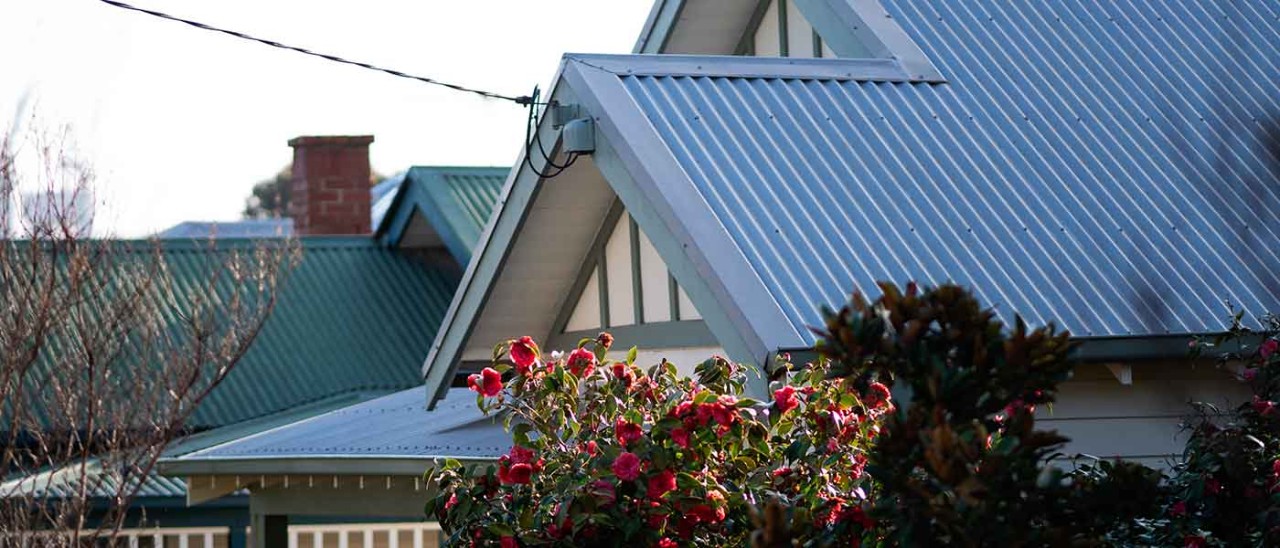
Your roof is one of the hardest-working parts of your home, protecting it from driving rain, harsh UV rays and wild Victorian weather. But as with any part of your property, it's important to keep your roof in good condition, which includes cleaning your gutters and fixing any roof leaks.
For homes in regions such as the Dandenong Ranges, Yarra Valley, Gippsland or the Bellarine Peninsula, damp conditions and tree debris add extra pressure to roof structures. In northern parts of the state - such as Mildura or Swan Hill - harsh sunlight and dry heat can also age roofing materials more quickly.
A healthy roof protects your home from water ingress, preserves its structural integrity, and improves energy efficiency. Regular checks and timely repairs are the best way to avoid costly damage, especially as Victoria's older housing ages.
Here's everything that Victorian homeowners need to know about roof leaks, regular maintenance, professional repairs, and full reroofing - including when to act, how to choose a roofing material that suits the southern climate, and what it might cost.
Roofing repairs and maintenance guide
Common causes of roof leaks in Victorian homes
Roof leaks in Victoria are most commonly caused by weather damage, aging materials, blocked gutters, or poor maintenance. With many homes built pre-1980s, particularly in older suburbs and regional towns, age-related issues are also frequent.
Cracked or dislodged roof tiles
Concrete and terracotta tiles are common across Victorian homes. These can shift or break due to strong winds or hail...or simply weaken over decades.
Rusted corrugated iron or Colorbond sheets
Rust or corrosion around fastenings and joins is common on older metal roofs, especially where leaves and moisture are allowed to sit. Coastal homes in areas like the Mornington Peninsula may see this wear faster due to salt exposure.
Blocked gutters and downpipes
Melbourne's many tree-lined streets and leafy suburbs (such as Kew, Eltham or Olinda) often experience blocked gutters. When gutters overflow, water can back up into roof cavities.
Box gutters, which are common in flat-roofed terraces and commercial buildings across inner-Melbourne, can cause severe internal leaks if blocked.
Damaged flashings and valleys
Metal flashings seal gaps around chimneys, skylights and ridges. Over time, they can warp or crack, particularly after temperature extremes.
Poor installation or workmanship
Leaks often result from incorrectly installed roofing components, such as after solar panels, whirlybirds, or skylights.
Moss and lichen growing on the roof
Moss and lichen growth can cause several issues, including erosion of the protective coating on the tiles and structural damage. If moss and lichen grow in the joints between tiles, that can create a damming effect that slows down water flow and causes it to overflow into the roof space.
There are several things that roof professionals can do to prevent moss and lichen growth on your roof:
- Regular cleaning - it's important to remove debris, leaves, and other organic materials that can promote moss and lichen growth
- Trim overhanging branches - trim any overhanging branches to reduce shade and moisture on the roof, as moss and lichen thrive in moist, shady areas
- Install zinc strips - install zinc strips near the ridge of the roof. When it rains, zinc particles will wash down the roof and inhibit moss and lichen growth
- Chemical treatments - use chemical treatments specifically designed to kill moss and lichen. Caution is required if you do this yourself. You need to follow the manufacturer's instructions and take precautions to protect nearby plants and the environment
- Pressure washing - for severe infestations, pressure washing can be effective. This is a highly dangerous activity and should only be carried out by a professional with the right safety equipment.
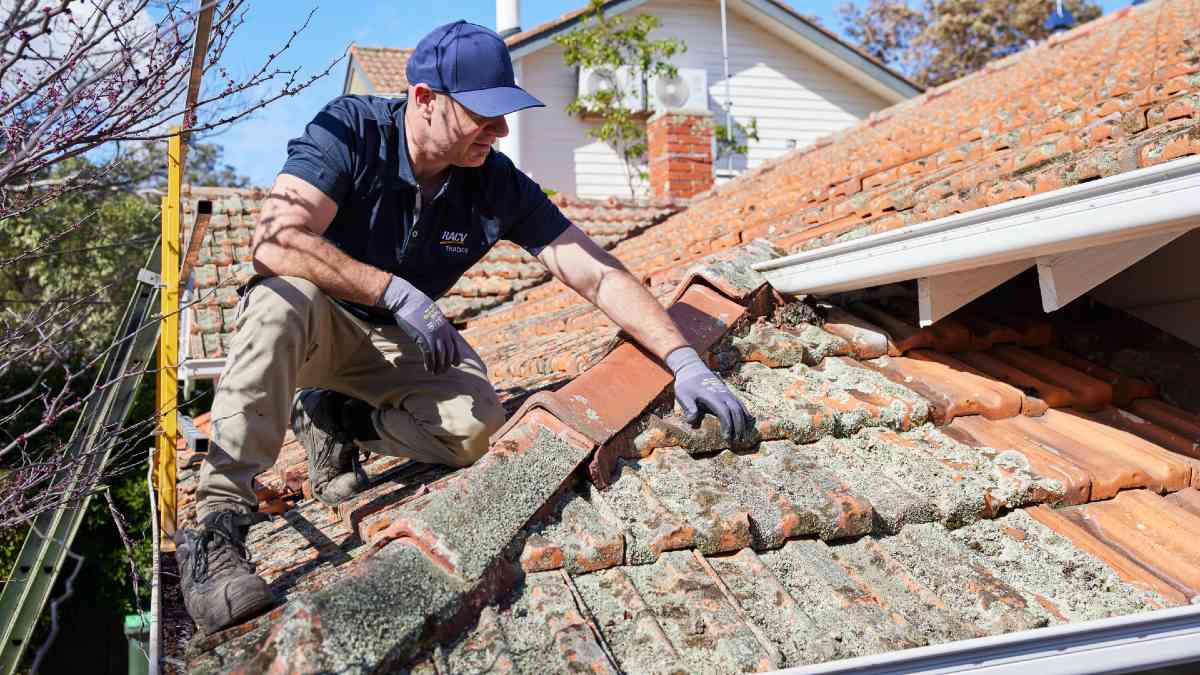
Moss and lichen can cause several issues with your roof.
Signs your roof may be leaking
It's not always obvious when your roof is deteriorating. In fact, many leaks go unnoticed until water has already caused damage to your ceiling, insulation or plasterwork. Regular maintenance, such as cleaning gutters and checking roof penetrations, is essential to prevent issues.
The most common signs that you have roof issues include:
- water stains or brown marks on ceilings and cornices
- paint bubbling or peeling on interior walls
- mould or mildew in upper rooms
- damp insulation in the roof cavity
- musty odours in dry weather
- visible drips or sagging ceilings during or after rain
- loose or missing tiles
- rust on metal roofs or gutters
The sooner you detect a leak, the easier it is to repair - and the less likely you'll face more serious damage to your home's structure.
What to do if your roof is leaking
Contain the water
Place a bucket or towel where water is leaking to reduce interior damage. If the ceiling is sagging with water, avoid the area in case of collapse.
Call a roofing professional
In Victoria, roof repairs must be done by a licensed roof plumber or roofing contractor. Don't risk climbing onto the roof yourself, especially in wet or windy conditions.
Contact your insurer
If the leak was caused by a storm, tree branch, or other insured event, contact your home insurance provider to start a claim.
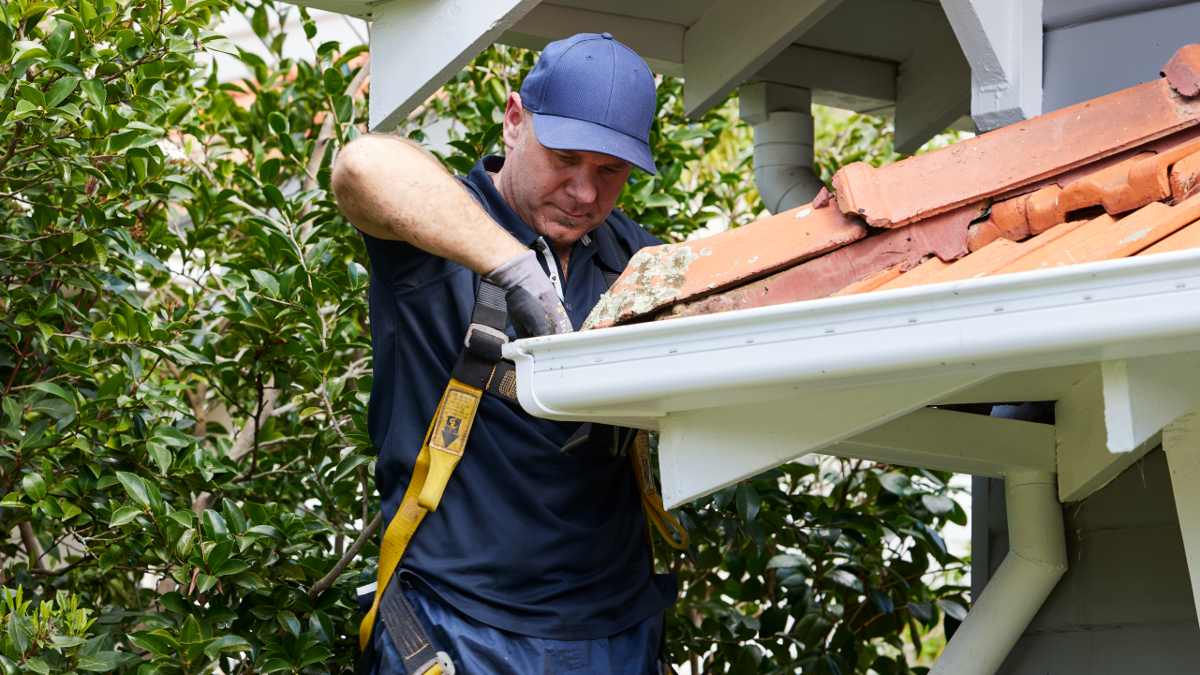
Blocked gutters can lead to roof leaks if not cleared.
Reroofing: when repairs aren't enough
If your roof needs constant repair or is showing signs of widespread failure, reroofing may be the most economical and long-term solution.
Signs you may need to reroof
- The roof is more than 30-40 years old
- Frequent or recurring leaks despite repairs
- Visible sagging or compromised structure
- Extensive rust or tile cracking
- You're renovating and want to modernise the look or improve insulation
What's involved in reroofing?
- Removal of old tiles or metal sheets
- Inspection and repair of battens and roof frame
- Installation of sarking (reflective foil) or insulation
- Laying of new roofing material
- New gutters, ridge capping, and flashings if required
- Removal of old materials and clean-up
What factors do I need to consider if I need a new roof?
If you are considering a new roof, either for a new build or for reroofing, here are some important factors to keep in mind:
- Roofing materials - different materials have varying lifespans, costs, and maintenance requirements
- Roof design - the architectural design should be suitable and compliant with regulations; flat roofs with multiple penetrations can lead to leak issues
- Box gutters - be cautious with box gutters, especially in leafy areas: they can accumulate leaf debris, leading to blockages and water ingress into the property
- Maintenance - regular maintenance, such as cleaning gutters and checking roof penetrations, is essential to prevent issues
- Regulations and codes - ensure that the roofing work complies with current regulations and codes to avoid costly upgrades in the future
- Professional inspection - have a roof professional inspect the roof every eight to 10 years to identify potential issues early.
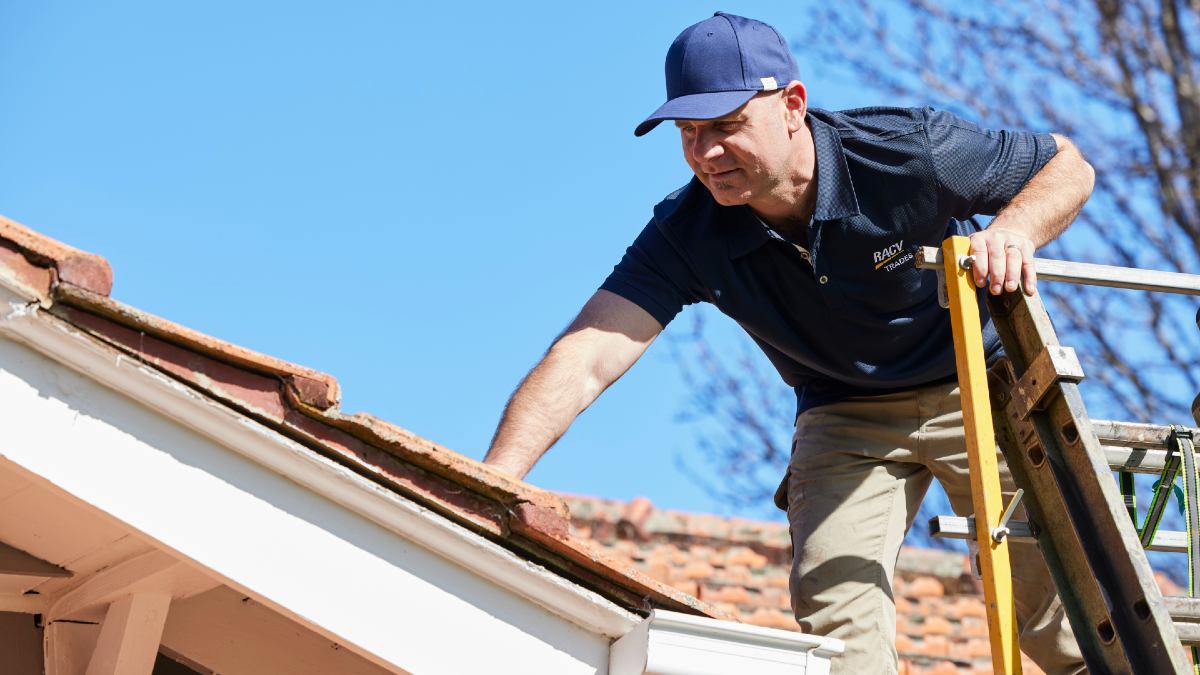
If you need to reroof your home, choose a qualified and reputable roofing professional to do the job.
Best roofing materials for Victorian homes
Colorbond steel
Ideal for Melbourne's climate and popular across new builds, Colorbond is durable, lightweight and has a colourfast coating that comes with a guarantee against fading. It is available in many colours and profiles, making it a versatile option for different architectural styles. It's also fire-resistant: a big plus for bushfire-prone areas.
Pros: Long lifespan, low maintenance, suits solar panels
Cons: Noisier in rain without insulation, more expensive than tiles
Terracotta tiles
Seen on many period homes and coastal properties, terracotta tiles are attractive and thermally efficient, but require careful maintenance in damp regions like the Dandenongs or Macedon Ranges. The tiles can become brittle towards the end of their lifespan, making them liable to crack if climbed on.
Pros: Timeless look, great thermal performance
Cons: Fragile, heavy, more expensive to install
Concrete tiles
Common across Victoria's suburbs from the 1970s onward, concrete tiles are cost-effective and easy to replace. Concrete tiles usually come in a flat profile, which is more prone to leakage. These tiles should have sarking paper under them to avoid any unwanted leaks.
Regular maintenance, such as cleaning and inspecting for cracks or damage, is essential to ensure the longevity of concrete tiles - however, this is a job for professionals because the tiles are prone to breakage.
Pros: Affordable, easy to repair
Cons: Can fade or crack over time, heavy
Slate roofs
Often used in heritage homes in inner Melbourne or high-end builds, slate is elegant but expensive. Slate roofs are highly specialised and require professional handling. Don't attempt any DIY work on slate roofs due to the risk of damage.
Pros: Very long-lasting, premium appearance
Cons: Costly, requires expert installation
Galvanised iron
Once the standard across rural Victoria and early 20th-century homes, galvanised iron remains a common sight on older weatherboards, farmhouses, and inner-Melbourne renovations aiming to preserve a heritage look. Made by coating iron or steel with a layer of protective zinc, galvanised roofs have a distinctive silver finish that dulls with age.
Pros: Lightweight and easy to install, individual sheets can be replaced
Cons: Shorter lifespan than modern alternatives, susceptible to rust, can be noisy in heavy rain or hail, requires regular maintenance to clear moss, lichen or debris
Zincalume
Zincalume is a high-performance metal roofing material made from a combination of aluminium, zinc, and silicon-coated steel. It's used widely across Victoria in both rural and suburban homes as a cost-effective and long-lasting alternative to galvanised iron. Zincalume has a pale, matte silver finish that weathers to a soft patina over time.
Pros: Very long lifespan (typically 25–40 years), corrosion-resistant, fully recyclable
Cons: Can be reflective in strong sun, may require additional insulation or acoustic lining, not available in a wide colour range
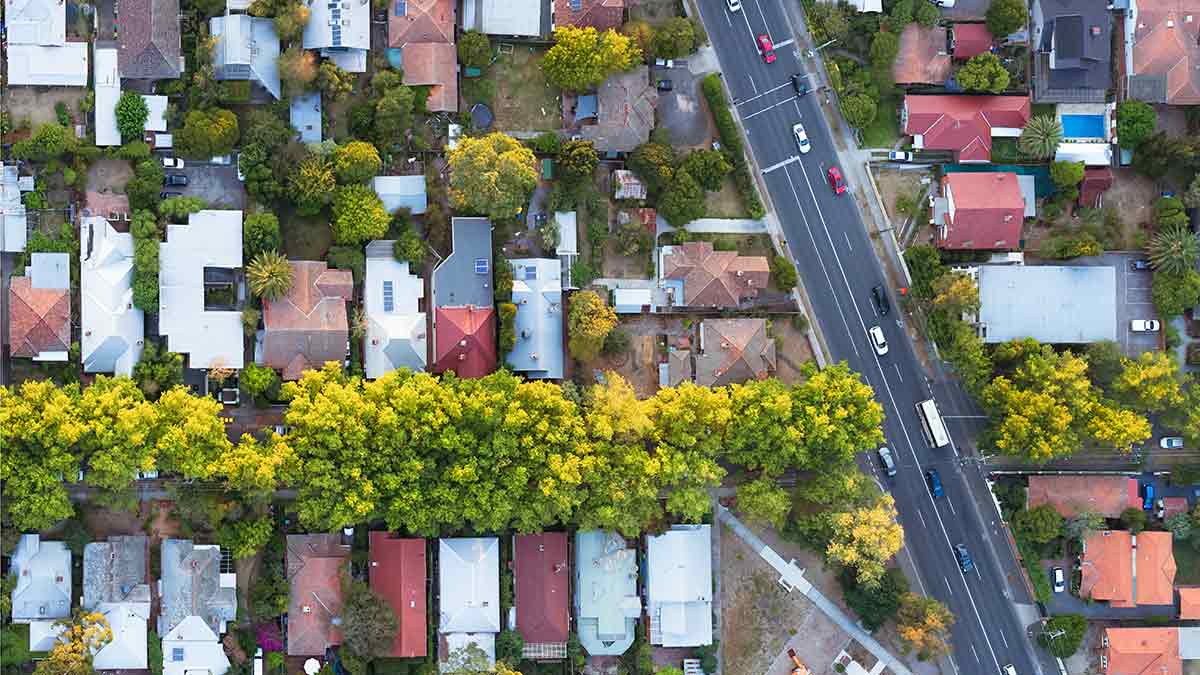
There are many different kinds of roofting materials. Image: Getty
Choosing a reputable roofing contractor in Victoria
All roofing and roof plumbing work in Victoria must be carried out by a registered building practitioner or licensed roof plumber. When selecting a roofing professional:
- check the Victorian Building Authority (VBA) website for licensing
- ask for evidence of insurance (public liability and workers comp)
- read reviews or get recommendations from neighbours
- always get a written quote with detailed inclusions
- ask about warranties for both materials and workmanship.
Avoid cash jobs or unlicensed trades, as you may not be covered by insurance or able to claim warranty if something goes wrong.
Insurance and roof work in Victoria
Victorian homeowners should be aware of what home insurance* does and doesn't cover when it comes to roof repairs.
What may be covered
- Storm, hail or wind damage
- Tree impact
- Fire-related damage
- Vandalism
What's not covered
- Wear and tear
- Rust or corrosion
- Leaks from poor maintenance
- DIY installation faults
Make sure you read your Product Disclosure Statement (PDS) and schedule regular roof checks to avoid damage.
How do I check if my roof is ready for solar panels?
Going solar is a great way to help reduce your energy bills. RACV Solar installs solar systems on tin, cement and terracotta roofs, but not slate, which is often too fragile.
Check your roof is big enough for solar panels. You'll need at least 25-35m² for a 5kW system. While north-facing solar panels work best, the team at RACV Solar can advise you on how they can position panels to get maximum sun.
Once your solar system is installed, the solar panels should self-clean when it rains. However, it's a good idea to get them checked and cleaned regularly, especially in drier months. Over time your panels may collect dust, debris or bird droppings which can reduce energy production.

Going solar is a great way to help reduce your energy bills.
Preventative roof maintenance for Victorian homes
Preventative maintenance is crucial in extending the life of your roof and avoiding leaks. Here's how to stay ahead.
Clean gutters twice annually
Aim to clean gutters every six months, or more often if you live in a leafy suburb or bushfire-prone zone. Clogged gutters contribute to roof leaks and water overflow. Consider booking a gutter cleaning service to clear your gutters, as falls from ladders can cause serious injuries.
Book an annual roof inspection
Engage a licensed roofing contractor to inspect your roof once a year, especially if your home is over 20 years old. They can identify hairline cracks, rust spots, loose fixings or moss growth before they become problems.
Trim overhanging trees
Branches rubbing on roofs can damage tiles and sheet metal, particularly during windy spring and summer weather. Keep trees trimmed back and check for broken branches that need removing after storms.
Monitor interior signs
Ceiling stains, musty smells or sagging plaster are internal signs something's not right above. Book a professional to inspect your roof immediately if you notice these signs.
RACV Trades is a trading name of RACV's trade partner, Club Home Response Pty Ltd (Victorian registered domestic building practitioner number CDB-U 100178). All works are performed or arranged by Club Home Response Pty Ltd. trading as RACV Trades. Read the RACV Trades Terms and Conditions.
*The information provided is general advice only. Before making any decisions please consider your own circumstances and the Product Disclosure Statement and Target Market Determinations. For copies, visit racv.com.au. As distributor, RACV Insurance Services Pty Ltd AFS Licence No. 230039 receives commission for each policy sold or renewed. Product(s) issued by Insurance Manufacturers of Australia Pty Ltd ABN 93 004 208 084 AFS Licence No. 227678.


